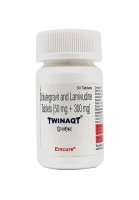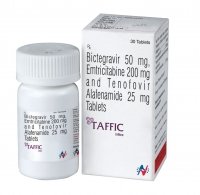Vaccination induces HIV broadly neutralizing antibody precursors in humans
Human vaccination induces bnAb precursors
Each year, more than 1 million new HIV infections occur, highlighting the need for effective HIV vaccines. Vaccine strategies that induce broadly neutralizing antibodies (bnAbs) have promise to combat HIV and other pathogens but have not yet been tested in humans. Leggat et al. report the results of a phase 1 clinical trial showing that a germline-targeting priming immunogen was safe and feasible and induced targeted bnAb-precursor responses in 97% of vaccine recipients at substantial frequencies in each individual (see the Perspective by Moore). bnAb-precursor responses made favorable gains in mutation and affinity after a booster vaccination. The results establish proof of principle for this reductionist vaccine approach and encourage the development of additional boosters to induce bnAbs. —PNK
Structured Abstract
INTRODUCTION
Vaccines that induce antibodies with predefined genetic features and binding specificities have promise to combat viruses with high antigenic diversity such as HIV, influenza, hepatitis C virus, and betacoronaviruses. Although these pathogens have eluded the development of vaccines that induce broad immunity covering their antigenic diversity, broadly neutralizing antibodies (bnAbs) have been discovered. Such bnAbs bind to relatively conserved epitopes on membrane glycoproteins of each pathogen, with features of each antibody allowing binding to a particular epitope. If vaccines could be developed to consistently induce similar bnAbs, preferably in conjunction with broad T cell immunity, protection against these pathogens might be achieved.
RATIONALE
bnAbs acquire affinity-enhancing mutations when a bnAb-precursor B cell mutates and matures from the original naïve B cell (or “germline”) state. Germline-targeting vaccine design aims to induce bnAbs by stimulating rare bnAb-precursor B cells that have antibody genes and other properties needed to develop into bnAbs for a specific epitope. This “priming” step must generate a pool of bnAb-precursor–derived germinal center and/or memory B cells that are susceptible to reactivation by a boost immunogen closer in structure to the native viral glycoprotein. Sequential boosting with immunogens of increasing similarity to the native glycoprotein then aims to guide somatic hypermutation and affinity maturation to produce bnAbs that target the desired epitope.
RESULTS
We conducted a first-in-human test of the germline-targeting strategy by evaluating the safety and immune responses of a germline-targeting priming vaccine candidate, eOD-GT8 60mer nanoparticle adjuvanted with AS01B, in the IAVI G001 phase 1 clinical trial. Each participant received two administrations of placebo, low-dose vaccine, or high-dose vaccine 8 weeks apart. The eOD-GT8 immunogen was designed to activate B cell precursors for HIV VRC01-class bnAbs defined by their usage of heavy chain variable gene alleles VH1-2*02 or *04 and any light chain complementarity determining region 3 with a length of five amino acids. We collected immune cells from the blood and lymph nodes of participants and carried out epitope-specific B cell sorting, B cell receptor (BCR) sequencing, and bioinformatic and statistical analyses. We also produced monoclonal antibodies and measured their binding affinities for the vaccine antigen. The vaccine had a favorable safety profile and induced VRC01-class responses in 97% (35 of 36) of vaccine recipients with median frequencies reaching 0.1% among immunoglobulin G memory B cells in blood. bnAb-precursors shared multiple properties with bnAbs and made substantial gains in somatic hypermutation and affinity with the boost.
CONCLUSION
The results establish clinical proof of concept for the germline-targeting vaccine design priming strategy, support development of boosting regimens to generate VRC01-class bnAb responses against HIV, and encourage application of the germline-targeting strategy to other targets in HIV and other pathogens.
Test of germline-targeting vaccine priming in healthy humans.
Immune cells were isolated from recipients of eOD-GT8 60mer vaccine or placebo, and antibody sequences from vaccine-binding B cells were analyzed to measure the VRC01-class bnAb-precursor response rate among participants and the frequency of VRC01-class bnAb-precursor B cells among memory B cells (MBCs) in each participant. Somatic hypermutation (SHM) and binding affinity were measured. CREDIT: Christopher Cottrell. Created with Biorender.com
Abstract
Broadly neutralizing antibodies (bnAbs) can protect against HIV infection but have not been induced by human vaccination. A key barrier to bnAb induction is vaccine priming of rare bnAb-precursor B cells. In a randomized, double-blind, placebo-controlled phase 1 clinical trial, the HIV vaccine–priming candidate eOD-GT8 60mer adjuvanted with AS01B had a favorable safety profile and induced VRC01-class bnAb precursors in 97% of vaccine recipients with median frequencies reaching 0.1% among immunoglobulin G B cells in blood. bnAb precursors shared properties with bnAbs and gained somatic hypermutation and affinity with the boost. The results establish clinical proof of concept for germline-targeting vaccine priming, support development of boosting regimens to induce bnAbs, and encourage application of the germline-targeting strategy to other targets in HIV and other pathogens.





